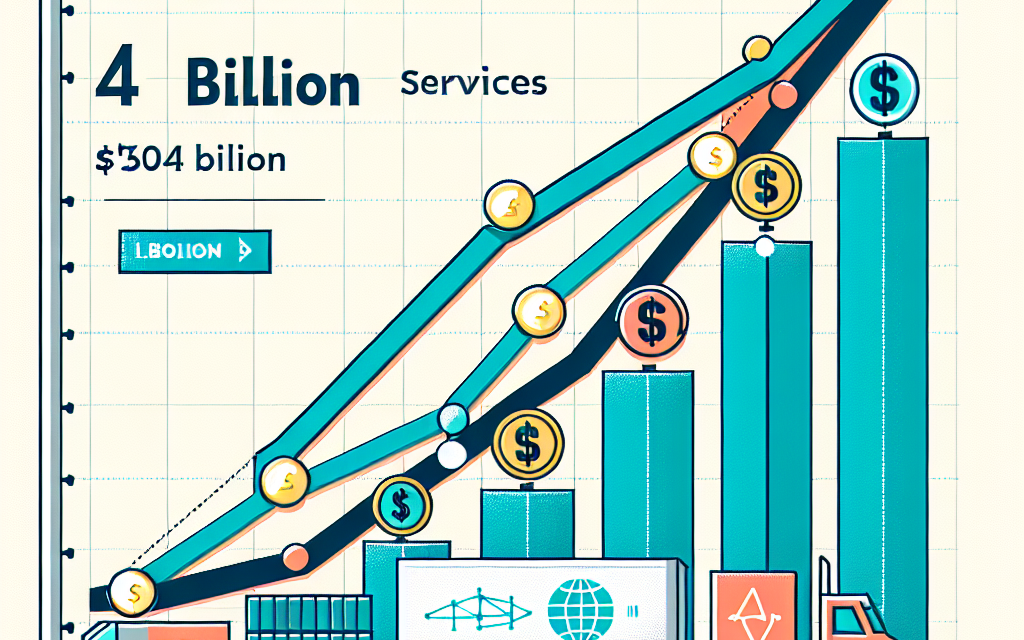“4PL Services: Driving Growth with Demand Set to Surpass $104 Billion by 2030!”
Introduction
The demand for Fourth-Party Logistics (4PL) services is projected to surpass $104 billion by 2030, driven by the increasing complexity of supply chains and the need for integrated logistics solutions. As businesses seek to enhance efficiency, reduce costs, and improve customer satisfaction, 4PL providers are emerging as essential partners in managing and optimizing logistics operations. This growth is fueled by advancements in technology, the rise of e-commerce, and the globalization of trade, prompting companies to adopt comprehensive logistics strategies that encompass not only transportation and warehousing but also data analytics and supply chain management. As organizations continue to prioritize agility and responsiveness in their operations, the role of 4PL services will become increasingly vital in navigating the challenges of a dynamic market landscape.
Growth Drivers of 4PL Services in the Supply Chain Industry
The demand for Fourth-Party Logistics (4PL) services is anticipated to surpass $104 billion by 2030, reflecting a significant shift in the supply chain landscape. This growth can be attributed to several key drivers that are reshaping how businesses approach logistics and supply chain management. As companies increasingly seek to enhance efficiency and reduce costs, the adoption of 4PL services has become a strategic imperative.
One of the primary growth drivers is the rising complexity of global supply chains. As businesses expand their operations internationally, they encounter a myriad of challenges, including regulatory compliance, cultural differences, and varying market dynamics. In this context, 4PL providers offer a comprehensive solution by managing the entire supply chain process, from procurement to distribution. By leveraging their expertise, companies can navigate these complexities more effectively, allowing them to focus on their core competencies while ensuring that their logistics operations run smoothly.
Moreover, the rapid advancement of technology plays a crucial role in the increasing demand for 4PL services. The integration of advanced technologies such as artificial intelligence, machine learning, and the Internet of Things (IoT) has transformed supply chain operations. These technologies enable real-time data analysis, predictive analytics, and enhanced visibility across the supply chain. Consequently, 4PL providers are well-positioned to harness these innovations, offering clients improved decision-making capabilities and operational efficiencies. As businesses recognize the value of data-driven insights, the reliance on 4PL services is expected to grow.
In addition to technological advancements, the increasing emphasis on sustainability is driving the demand for 4PL services. Companies are under mounting pressure to adopt environmentally friendly practices and reduce their carbon footprints. 4PL providers can assist organizations in achieving their sustainability goals by optimizing transportation routes, consolidating shipments, and implementing green logistics practices. By partnering with a 4PL provider, businesses can not only enhance their operational efficiency but also demonstrate their commitment to sustainability, which is becoming a critical factor for consumers and stakeholders alike.
Furthermore, the ongoing disruptions caused by global events, such as the COVID-19 pandemic, have highlighted the vulnerabilities within traditional supply chains. As a result, businesses are re-evaluating their logistics strategies and seeking more resilient solutions. 4PL services offer the flexibility and adaptability needed to respond to unforeseen challenges. By outsourcing logistics management to a 4PL provider, companies can quickly pivot their operations in response to market fluctuations, ensuring continuity and stability in their supply chains.
Additionally, the growing trend of e-commerce is significantly contributing to the demand for 4PL services. As online shopping continues to gain traction, businesses are faced with the challenge of meeting customer expectations for fast and reliable delivery. 4PL providers can streamline the fulfillment process, optimize inventory management, and enhance last-mile delivery solutions. This capability is particularly crucial in an era where consumers expect rapid service, and businesses must adapt to remain competitive.
In conclusion, the anticipated growth of 4PL services in the supply chain industry is driven by a confluence of factors, including the increasing complexity of global supply chains, technological advancements, a focus on sustainability, the need for resilience in the face of disruptions, and the rise of e-commerce. As organizations continue to navigate these challenges, the strategic partnership with 4PL providers will become increasingly vital, positioning them for success in an ever-evolving marketplace.
Impact of E-Commerce on 4PL Services Demand
The rapid growth of e-commerce has significantly transformed the logistics landscape, leading to an increased demand for Fourth-Party Logistics (4PL) services. As online shopping continues to gain traction, businesses are increasingly recognizing the need for sophisticated supply chain solutions that can efficiently manage the complexities associated with e-commerce operations. This shift is not merely a trend; it represents a fundamental change in how goods are distributed and delivered, prompting a reevaluation of traditional logistics models.
One of the primary drivers of this demand is the sheer volume of transactions facilitated by e-commerce platforms. With millions of products available at consumers’ fingertips, the logistics involved in fulfilling these orders has become more intricate. 4PL providers, which act as integrators of various logistics services, are uniquely positioned to streamline these processes. They offer comprehensive solutions that encompass everything from inventory management to last-mile delivery, thereby enabling businesses to focus on their core competencies while ensuring that their logistics operations are handled efficiently.
Moreover, the rise of consumer expectations has further fueled the demand for 4PL services. Today’s consumers expect not only a wide selection of products but also rapid delivery times and seamless service. This expectation places immense pressure on businesses to optimize their supply chains. 4PL providers can leverage advanced technologies, such as artificial intelligence and data analytics, to enhance visibility and responsiveness throughout the supply chain. By utilizing these tools, businesses can better anticipate demand fluctuations, manage inventory levels, and ultimately improve customer satisfaction.
In addition to consumer expectations, the global nature of e-commerce has introduced new challenges that 4PL services are well-equipped to address. As companies expand their reach into international markets, they must navigate a complex web of regulations, tariffs, and logistical hurdles. 4PL providers possess the expertise and resources necessary to manage these challenges effectively. By offering insights into local market conditions and compliance requirements, they enable businesses to operate smoothly across borders, thereby facilitating growth in the global marketplace.
Furthermore, the COVID-19 pandemic has accelerated the shift towards e-commerce, highlighting the importance of agile logistics solutions. As traditional retail channels faced unprecedented disruptions, many businesses turned to online sales as a lifeline. This pivot underscored the necessity for robust logistics frameworks capable of adapting to sudden changes in demand. 4PL services, with their flexible and scalable solutions, have proven invaluable in helping businesses navigate these turbulent times. As a result, many organizations are now considering long-term partnerships with 4PL providers to ensure resilience in their supply chains.
As we look towards the future, it is clear that the demand for 4PL services will continue to rise, driven by the ongoing evolution of e-commerce. The projected market value exceeding $104 billion by 2030 reflects not only the growth of online shopping but also the increasing complexity of logistics operations. Businesses that embrace 4PL solutions will be better positioned to thrive in this dynamic environment, as they can leverage the expertise and technology of 4PL providers to enhance their operational efficiency and customer service.
In conclusion, the impact of e-commerce on the demand for 4PL services is profound and multifaceted. As consumer expectations evolve and global markets expand, the need for integrated logistics solutions will only intensify. Companies that recognize this trend and invest in 4PL partnerships will likely find themselves at a competitive advantage, poised to meet the challenges of an ever-changing marketplace.
Technological Innovations Shaping 4PL Services
The logistics and supply chain management landscape is undergoing a significant transformation, driven largely by technological innovations that are reshaping the way Fourth-Party Logistics (4PL) services operate. As businesses increasingly recognize the importance of efficient supply chain management, the demand for 4PL services is projected to exceed $104 billion by 2030. This growth can be attributed to several key technological advancements that enhance operational efficiency, improve visibility, and foster collaboration among stakeholders.
One of the most impactful innovations in the realm of 4PL services is the integration of advanced data analytics. By leveraging big data, 4PL providers can analyze vast amounts of information to identify trends, optimize routes, and forecast demand more accurately. This capability not only streamlines operations but also enables companies to make informed decisions that enhance their overall supply chain performance. For instance, predictive analytics can help anticipate potential disruptions, allowing businesses to proactively adjust their strategies and mitigate risks. Consequently, the ability to harness data effectively is becoming a critical differentiator for 4PL providers in a competitive market.
In addition to data analytics, the rise of the Internet of Things (IoT) is revolutionizing the way logistics operations are managed. IoT devices, such as sensors and RFID tags, facilitate real-time tracking of goods throughout the supply chain. This level of visibility is invaluable for 4PL providers, as it allows them to monitor inventory levels, track shipments, and ensure compliance with regulatory requirements. Moreover, the data collected from IoT devices can be analyzed to identify inefficiencies and areas for improvement, further enhancing the overall effectiveness of logistics operations. As a result, the integration of IoT technology is becoming increasingly essential for 4PL services aiming to meet the evolving demands of their clients.
Furthermore, automation and robotics are playing a pivotal role in transforming 4PL services. Automated systems, such as warehouse management systems and robotic process automation, streamline various logistics processes, reducing the need for manual intervention. This not only increases efficiency but also minimizes the risk of human error, which can lead to costly delays and disruptions. Additionally, the use of autonomous vehicles for transportation is gaining traction, promising to revolutionize last-mile delivery and reduce operational costs. As these technologies continue to advance, 4PL providers are likely to adopt them more widely, further enhancing their service offerings.
Moreover, the emergence of blockchain technology is set to redefine transparency and security within the supply chain. By providing a decentralized and immutable ledger, blockchain enables all parties involved in the logistics process to access real-time information regarding the status of shipments and transactions. This transparency fosters trust among stakeholders and reduces the likelihood of fraud or disputes. As 4PL providers increasingly adopt blockchain solutions, they will be better equipped to offer secure and efficient services that meet the demands of their clients.
In conclusion, the demand for 4PL services is expected to surge in the coming years, driven by technological innovations that are reshaping the logistics landscape. Advanced data analytics, IoT integration, automation, and blockchain technology are just a few of the key advancements that are enhancing operational efficiency and improving supply chain visibility. As these technologies continue to evolve, they will undoubtedly play a crucial role in shaping the future of 4PL services, enabling providers to meet the growing expectations of businesses seeking comprehensive and effective logistics solutions. The convergence of these innovations not only promises to elevate the standard of service but also positions 4PL providers as essential partners in navigating the complexities of modern supply chains.
The Role of Sustainability in 4PL Services Growth
As the logistics and supply chain landscape continues to evolve, the demand for Fourth-Party Logistics (4PL) services is projected to exceed $104 billion by 2030. This growth is not merely a reflection of increased global trade and e-commerce but is significantly influenced by the rising emphasis on sustainability within the logistics sector. The integration of sustainable practices into 4PL services is becoming a critical factor for businesses seeking to enhance their operational efficiency while minimizing their environmental impact.
To begin with, sustainability in logistics encompasses a wide range of practices aimed at reducing carbon footprints, optimizing resource use, and promoting social responsibility. As consumers become more environmentally conscious, companies are increasingly pressured to adopt sustainable practices throughout their supply chains. This shift is driving the demand for 4PL services, which offer comprehensive solutions that can help organizations implement and manage these sustainable initiatives effectively. By leveraging advanced technologies and innovative strategies, 4PL providers can assist businesses in achieving their sustainability goals while maintaining cost-effectiveness.
Moreover, the role of technology in promoting sustainability cannot be overstated. 4PL services often utilize sophisticated data analytics and artificial intelligence to optimize logistics operations. These technologies enable companies to identify inefficiencies, reduce waste, and streamline processes. For instance, route optimization algorithms can significantly decrease fuel consumption and emissions by determining the most efficient paths for transportation. Consequently, as businesses increasingly recognize the importance of sustainability, they are turning to 4PL providers that can offer these technological solutions, thereby driving demand for their services.
In addition to technological advancements, regulatory pressures are also shaping the landscape of 4PL services. Governments around the world are implementing stricter environmental regulations, compelling companies to adopt sustainable practices. As a result, organizations are seeking 4PL partners who can navigate these complex regulatory environments and ensure compliance. This need for expertise in sustainability-related regulations further propels the growth of 4PL services, as providers are well-equipped to guide businesses through the intricacies of environmental legislation.
Furthermore, the growing importance of corporate social responsibility (CSR) is influencing the demand for sustainable 4PL services. Companies are increasingly aware that their supply chain practices can significantly impact their brand reputation and customer loyalty. By partnering with 4PL providers that prioritize sustainability, businesses can enhance their CSR initiatives and demonstrate their commitment to environmental stewardship. This alignment not only attracts environmentally conscious consumers but also fosters stronger relationships with stakeholders who value sustainability.
As the demand for sustainable practices continues to rise, the role of collaboration in 4PL services becomes increasingly vital. Effective collaboration among various stakeholders, including suppliers, manufacturers, and logistics providers, is essential for creating a sustainable supply chain. 4PL providers excel in facilitating this collaboration by acting as intermediaries that coordinate efforts across the supply chain. By fostering partnerships and encouraging information sharing, 4PL services can help businesses implement sustainable practices more effectively, thereby contributing to their overall growth.
In conclusion, the anticipated growth of 4PL services to over $104 billion by 2030 is intricately linked to the increasing focus on sustainability within the logistics sector. As businesses strive to meet consumer expectations, comply with regulations, and enhance their corporate social responsibility, the demand for 4PL services that prioritize sustainable practices will continue to rise. By leveraging technology, navigating regulatory landscapes, and fostering collaboration, 4PL providers are well-positioned to support organizations in their sustainability journeys, ultimately driving the growth of the industry as a whole.
Key Players in the 4PL Market and Their Strategies
The fourth-party logistics (4PL) market is poised for significant growth, with demand expected to exceed $104 billion by 2030. This surge can be attributed to the increasing complexity of supply chains and the need for businesses to streamline their logistics operations. As the market expands, several key players are emerging, each employing distinct strategies to capture market share and enhance their service offerings. Understanding these players and their approaches provides valuable insight into the evolving landscape of 4PL services.
One of the foremost players in the 4PL market is DHL Supply Chain, a subsidiary of the global logistics giant Deutsche Post DHL Group. DHL has strategically positioned itself by leveraging its extensive network and technological capabilities. The company focuses on integrating advanced technologies such as artificial intelligence and data analytics into its logistics solutions. By doing so, DHL not only enhances operational efficiency but also provides clients with real-time visibility into their supply chains. This commitment to innovation allows DHL to offer tailored solutions that meet the specific needs of various industries, thereby solidifying its leadership position in the market.
Another significant player is XPO Logistics, which has made substantial investments in technology to optimize its 4PL services. XPO’s strategy revolves around the use of digital platforms that facilitate seamless communication and collaboration between shippers and carriers. By harnessing the power of big data, XPO can analyze trends and predict demand fluctuations, enabling clients to make informed decisions. Furthermore, XPO’s focus on sustainability and environmentally friendly practices resonates with a growing number of businesses seeking to reduce their carbon footprint. This dual emphasis on technology and sustainability positions XPO as a forward-thinking leader in the 4PL space.
In addition to these established players, newer entrants like C.H. Robinson are also making waves in the 4PL market. C.H. Robinson has adopted a customer-centric approach, prioritizing the needs and preferences of its clients. By offering a comprehensive suite of logistics services, including freight brokerage and supply chain consulting, the company aims to provide end-to-end solutions that simplify the logistics process. Moreover, C.H. Robinson’s investment in technology, particularly its proprietary Navisphere platform, enhances visibility and control for clients, allowing them to manage their supply chains more effectively. This focus on customer satisfaction and technological integration has enabled C.H. Robinson to carve out a significant niche in the competitive 4PL landscape.
Furthermore, companies like Kuehne + Nagel are also noteworthy players in the 4PL market. Kuehne + Nagel has adopted a global approach, leveraging its extensive international network to provide comprehensive logistics solutions. The company emphasizes collaboration with clients to develop customized strategies that align with their specific business objectives. By fostering strong partnerships and utilizing its global reach, Kuehne + Nagel is well-positioned to meet the diverse needs of its clientele, thereby enhancing its competitive edge in the 4PL sector.
As the demand for 4PL services continues to rise, these key players are likely to shape the future of the market through their innovative strategies and customer-focused approaches. The interplay of technology, sustainability, and customer satisfaction will be critical in determining which companies thrive in this dynamic environment. Ultimately, the evolution of the 4PL market will not only reflect the changing needs of businesses but also highlight the importance of adaptability and foresight in navigating the complexities of modern supply chains. As we look ahead, it is clear that the strategies employed by these key players will play a pivotal role in defining the trajectory of the 4PL industry in the coming years.
Challenges Facing the 4PL Services Sector
The demand for Fourth-Party Logistics (4PL) services is projected to exceed $104 billion by 2030, reflecting a significant shift in the logistics and supply chain management landscape. However, this burgeoning sector is not without its challenges, which could impact its growth trajectory and operational efficiency. Understanding these challenges is crucial for stakeholders aiming to navigate the complexities of the 4PL environment effectively.
One of the primary challenges facing the 4PL services sector is the rapid pace of technological advancement. As businesses increasingly adopt automation, artificial intelligence, and data analytics, 4PL providers must continuously innovate to remain competitive. This necessitates substantial investment in technology and infrastructure, which can strain resources, particularly for smaller firms. Moreover, the integration of new technologies into existing systems can be fraught with difficulties, including compatibility issues and the need for extensive training of personnel. Consequently, 4PL providers must strike a delicate balance between adopting cutting-edge technologies and managing the associated costs and complexities.
In addition to technological hurdles, the 4PL sector grapples with the challenge of maintaining a skilled workforce. The logistics industry is experiencing a significant talent shortage, exacerbated by an aging workforce and the rapid evolution of job requirements. As 4PL services become more sophisticated, the demand for skilled professionals who can manage complex supply chains and leverage advanced technologies is increasing. However, attracting and retaining such talent is a formidable task, particularly in a competitive job market. This shortage can lead to operational inefficiencies and hinder the ability of 4PL providers to deliver high-quality services to their clients.
Furthermore, the global nature of supply chains introduces another layer of complexity for 4PL services. Geopolitical tensions, trade disputes, and regulatory changes can disrupt established supply chain networks, leading to increased costs and delays. For instance, fluctuations in tariffs and trade policies can impact sourcing strategies and necessitate rapid adjustments to logistics operations. Additionally, the ongoing effects of the COVID-19 pandemic have highlighted the vulnerabilities in global supply chains, prompting businesses to reconsider their reliance on single-source suppliers and distant manufacturing locations. As a result, 4PL providers must be agile and adaptable, capable of responding swiftly to external disruptions while ensuring continuity of service.
Another significant challenge is the increasing demand for sustainability within the logistics sector. As environmental concerns gain prominence, businesses are under pressure to adopt greener practices and reduce their carbon footprints. This shift necessitates a reevaluation of traditional logistics models, which often prioritize cost and efficiency over environmental impact. 4PL providers must therefore develop sustainable logistics solutions that align with their clients’ sustainability goals while still delivering value. This may involve investing in eco-friendly technologies, optimizing transportation routes, and implementing waste reduction strategies, all of which can be resource-intensive.
Lastly, the competitive landscape of the 4PL services sector poses a challenge in itself. With numerous players vying for market share, differentiation becomes essential. Providers must not only offer comprehensive logistics solutions but also demonstrate their unique value propositions to attract and retain clients. This competitive pressure can lead to price wars, which may compromise service quality and profitability.
In conclusion, while the demand for 4PL services is set to soar, the sector faces a myriad of challenges that require strategic foresight and adaptability. By addressing technological advancements, workforce shortages, global supply chain complexities, sustainability demands, and competitive pressures, 4PL providers can position themselves for success in an evolving marketplace.
Future Trends in 4PL Services Leading to Market Expansion
The logistics and supply chain management landscape is undergoing a significant transformation, driven by technological advancements and evolving consumer expectations. As businesses increasingly seek to optimize their operations, the demand for Fourth-Party Logistics (4PL) services is projected to exceed $104 billion by 2030. This anticipated growth is not merely a reflection of market size but also indicative of the changing dynamics within the logistics sector. Several future trends are emerging that are likely to propel the expansion of 4PL services, reshaping how companies approach their supply chain strategies.
One of the most prominent trends influencing the growth of 4PL services is the increasing complexity of global supply chains. As companies expand their operations internationally, they encounter a myriad of challenges, including regulatory compliance, cultural differences, and varying market demands. In response to these complexities, businesses are turning to 4PL providers, who offer comprehensive solutions that integrate various logistics functions. By leveraging the expertise of 4PL providers, companies can streamline their supply chain processes, reduce costs, and enhance overall efficiency. This trend is expected to continue as more organizations recognize the value of outsourcing logistics management to specialized providers.
Moreover, the rise of e-commerce has significantly impacted the logistics industry, creating a pressing need for agile and responsive supply chain solutions. As consumer preferences shift towards online shopping, businesses are compelled to adapt their logistics strategies to meet the demands of fast delivery and real-time inventory management. 4PL services are uniquely positioned to address these challenges, as they can provide end-to-end visibility and control over the supply chain. By utilizing advanced technologies such as artificial intelligence and data analytics, 4PL providers can optimize inventory levels, forecast demand more accurately, and enhance order fulfillment processes. Consequently, the growing e-commerce sector is expected to drive the demand for 4PL services, as companies seek to improve their operational agility.
In addition to these factors, sustainability is becoming an increasingly critical consideration for businesses across all sectors. As environmental concerns gain prominence, companies are under pressure to adopt sustainable practices within their supply chains. 4PL providers are responding to this demand by offering solutions that prioritize eco-friendly logistics operations. This includes optimizing transportation routes to reduce carbon emissions, implementing green packaging solutions, and utilizing renewable energy sources in warehousing and distribution. As sustainability becomes a key differentiator in the marketplace, businesses are likely to partner with 4PL providers that can help them achieve their environmental goals, further fueling the growth of the 4PL market.
Furthermore, the integration of advanced technologies such as the Internet of Things (IoT), blockchain, and automation is revolutionizing the logistics industry. These technologies enable real-time tracking of shipments, enhance transparency in transactions, and improve overall supply chain efficiency. 4PL providers are at the forefront of adopting these innovations, allowing them to offer enhanced services that meet the evolving needs of their clients. As businesses increasingly recognize the competitive advantages that come with technological integration, the demand for 4PL services is expected to rise.
In conclusion, the future of 4PL services appears promising, with several trends converging to drive market expansion. The complexities of global supply chains, the rise of e-commerce, the emphasis on sustainability, and the integration of advanced technologies are all contributing to a growing reliance on 4PL providers. As companies continue to navigate these challenges, the role of 4PL services will become increasingly vital, positioning the market for substantial growth in the coming years.
Q&A
1. **What are 4PL services?**
Fourth-party logistics (4PL) services involve the management of the entire supply chain by a single provider, integrating various logistics services and coordinating with multiple third-party logistics (3PL) providers.
2. **What is driving the demand for 4PL services?**
The demand is driven by the need for supply chain optimization, increased e-commerce activities, globalization of trade, and the complexity of logistics operations.
3. **What industries are expected to contribute to the growth of 4PL services?**
Key industries include retail, manufacturing, healthcare, and automotive, all of which require efficient logistics solutions to manage their supply chains.
4. **What are the benefits of using 4PL services?**
Benefits include improved supply chain visibility, cost reduction, enhanced efficiency, and the ability to focus on core business activities while outsourcing logistics management.
5. **How is technology influencing 4PL services?**
Technology, such as AI, IoT, and big data analytics, enhances real-time tracking, predictive analytics, and overall supply chain management, making 4PL services more effective.
6. **What is the projected market size for 4PL services by 2030?**
The market for 4PL services is expected to exceed $104 billion by 2030.
7. **What challenges might affect the growth of 4PL services?**
Challenges include regulatory compliance, cybersecurity risks, and the need for skilled workforce to manage complex logistics operations.
Conclusion
The demand for Fourth-Party Logistics (4PL) services is projected to surpass $104 billion by 2030, driven by the increasing complexity of supply chains, the need for integrated logistics solutions, and the growing emphasis on efficiency and cost reduction in global trade. As businesses seek to enhance their operational capabilities and adapt to evolving market dynamics, 4PL providers are expected to play a crucial role in facilitating seamless logistics management, thereby solidifying their position in the logistics industry.





